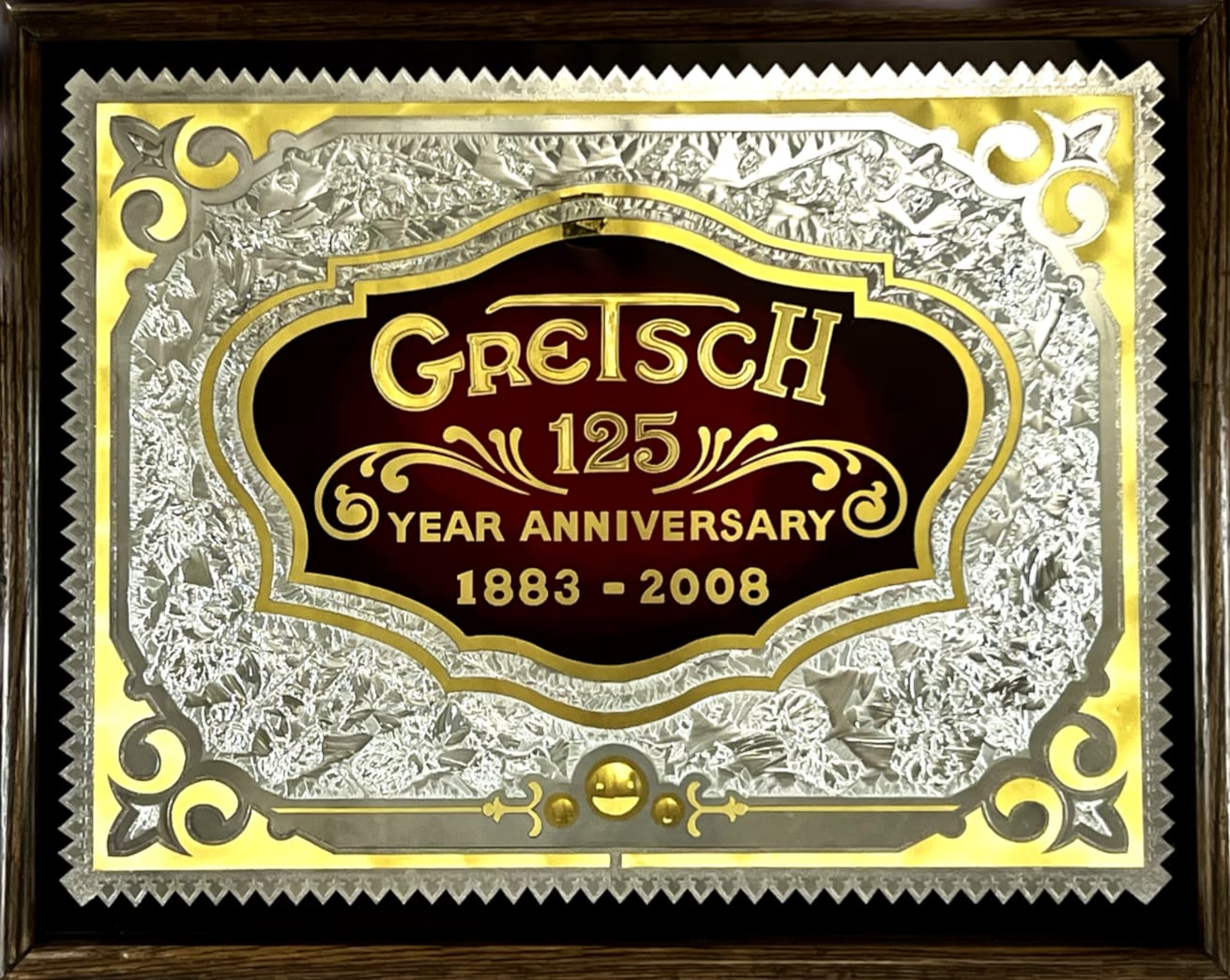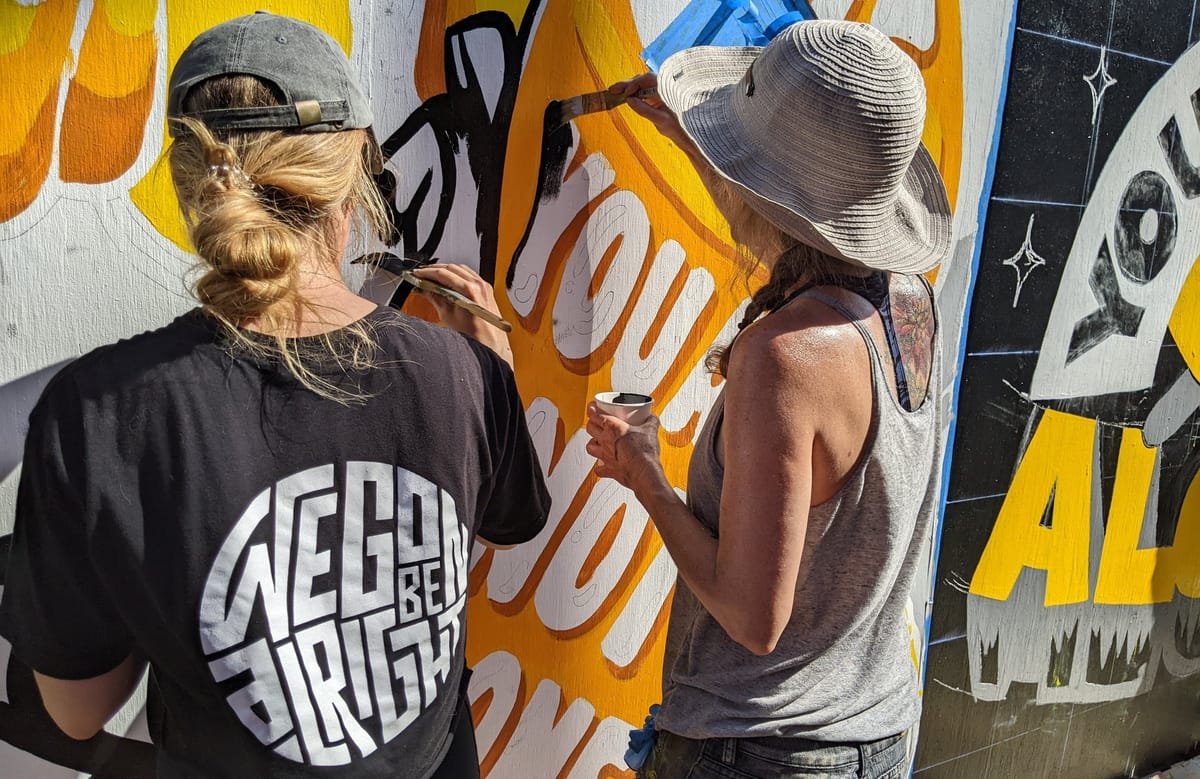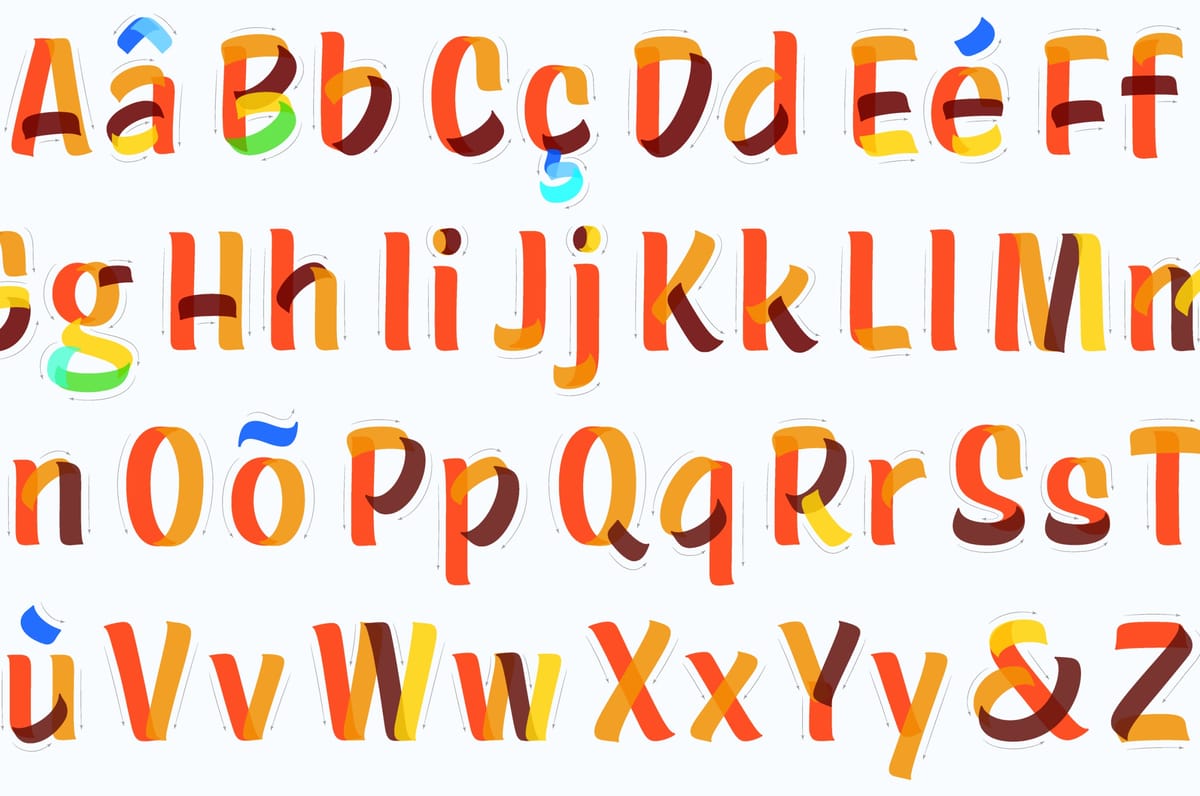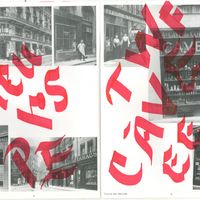Reverse Glass Gilding Processes in an Informative Video Overview
|
Older messages
Canal Life and the British Narrowboat Tradition
Tuesday, November 28, 2023
Ahead of our final BLAG event of the year [https://bl.ag/roses-are-red-a-narrowboat-tradition-with-ginny-barlow/], here are some links and resources for those interested in learning more about British
Sign Painting in the Sun: Benelux Letterheads 2023
Thursday, November 23, 2023
Sign painting, panel jamming, and more photos from the Benelux Letterheads sign painters gathering. BLAG Magazine: Adventures in Sign Painting Craft, Community & Culture BLAG Magazine: Adventures
Giving Thanks
Tuesday, November 21, 2023
As I wait to get BLAG 04 in my hands, I'm feeling gratitude that the magazine has reached this point, and thankful to everyone that has helped along the way When I set out on this journey, I was
Chain Letter: Serge Nidegger, Lowrider Sign Co.
Friday, November 17, 2023
Lowrider Sign Co.'s Serge Nidegger and a Parisian palimpsest that has inspired him for two decades. BLAG (Better Letters Magazine) BLAG (Better Letters Magazine) Sign painting vs graffiti in Paris.
Canals, Kids, Karbid and More New Shop Stock
Tuesday, November 14, 2023
I've recently added some new titles to the online book shop [https://shop.bl.ag/]. These have an international focus, and include the first children's book [https://shop.bl.ag/products/the-
You Might Also Like
Please Ignore These Popular TikTok Tax 'Hacks'
Saturday, March 1, 2025
Sour Cream Makes a Better Egg Wash Than Eggs. Maybe don't trust tax "loopholes" coming from a content creator. Not displaying correctly? View this newsletter online. TODAY'S FEATURED
⚡ Amazon Lightning Deal! 12 Hours Only! ⚡
Saturday, March 1, 2025
Special Offer From our Friends at Good Housekeeping ⚡ Amazon Lightning Deal! 12 Hours Only! ⚡ View in Browser 28-day mediterranean diet. Alternating images of meals including chicken skewers and cous-
Weekend: Are My Married Friends Being Rude? 😤
Saturday, March 1, 2025
— Check out what we Skimm'd for you today March 1, 2025 Subscribe Read in browser Header Image But first: a cute (and inexpensive) tumbler for your morning coffee Update location or View forecast
Hit the Courts This Spring in Our Favorite Tennis Shoes
Saturday, March 1, 2025
If you have trouble reading this message, view it in a browser. Men's Health The Check Out Welcome to The Check Out, our newsletter that gives you a deeper look at some of our editors' favorite
"I Might Not Be Getting Anything Done, But At Least I'm Not Having Fun"
Saturday, March 1, 2025
Do Americans actually resist pleasure? ͏ ͏ ͏ ͏ ͏ ͏ ͏ ͏ ͏ ͏ ͏ ͏ ͏ ͏ ͏ ͏ ͏ ͏ ͏ ͏ ͏ ͏ ͏ ͏ ͏ ͏ ͏ ͏ ͏ ͏ ͏ ͏ ͏ ͏ ͏ ͏ ͏ ͏ ͏ ͏ ͏ ͏ ͏ ͏ ͏ ͏ ͏ ͏ ͏ ͏ ͏ ͏ ͏ ͏ ͏ ͏ ͏ ͏ ͏ ͏ ͏ ͏ ͏ ͏ ͏ ͏ ͏ ͏ ͏ ͏ ͏ ͏ ͏ ͏ ͏ ͏ ͏ ͏ ͏ ͏ ͏
“Fog” by Emma Lazarus
Saturday, March 1, 2025
Light silken curtain, colorless and soft, / Dreamlike before me floating! ͏ ͏ ͏ ͏ ͏ ͏ ͏ ͏ ͏ ͏ ͏ ͏ ͏ ͏ ͏ ͏ ͏ ͏ ͏ ͏ ͏ ͏ ͏ ͏ ͏ ͏ ͏ ͏ ͏ ͏ ͏ ͏
savourites 96
Saturday, March 1, 2025
escaping the city | abandoning my phone | olive oil ice cream ͏ ͏ ͏ ͏ ͏ ͏ ͏ ͏ ͏ ͏ ͏ ͏ ͏ ͏ ͏ ͏ ͏ ͏ ͏ ͏ ͏ ͏ ͏ ͏ ͏ ͏ ͏ ͏ ͏ ͏ ͏ ͏ ͏ ͏ ͏ ͏ ͏ ͏ ͏ ͏ ͏ ͏ ͏ ͏ ͏ ͏ ͏ ͏ ͏ ͏ ͏ ͏ ͏ ͏ ͏ ͏ ͏ ͏ ͏ ͏ ͏ ͏ ͏ ͏ ͏ ͏ ͏ ͏ ͏ ͏
5-Bullet Friday — How to Choose Peace of Mind Over Productivity, Guinean Beats for Winding Down, Lessons from Legendary Coach Raveling, and a New Chapter from THE NO BOOK
Saturday, March 1, 2025
"Easy, relaxed, breathing always leads to surprise: at how centred we already are, how unhurried we are underneath it all." — David Whyte ͏ ͏ ͏ ͏ ͏ ͏ ͏ ͏ ͏ ͏ ͏ ͏ ͏ ͏ ͏ ͏ ͏ ͏ ͏ ͏ ͏ ͏ ͏ ͏ ͏ ͏ ͏
Nicole Kidman's “Butter Biscuit” Hair Transformation Is A Perfect Color Refresh
Saturday, March 1, 2025
Just in time for spring. The Zoe Report Daily The Zoe Report 2.28.2025 Nicole Kidman's “Butter Biscuit” Hair Transformation Is A Perfect Color Refresh (Celebrity) Nicole Kidman's “Butter
David Beckham's Lifestyle Keeps Him Shredded at 50
Friday, February 28, 2025
View in Browser Men's Health SHOP MVP EXCLUSIVES SUBSCRIBE David Beckham's Lifestyle Keeps Him Shredded at 50 David Beckham's Lifestyle Keeps Him Shredded at 50 The soccer legend opens up







